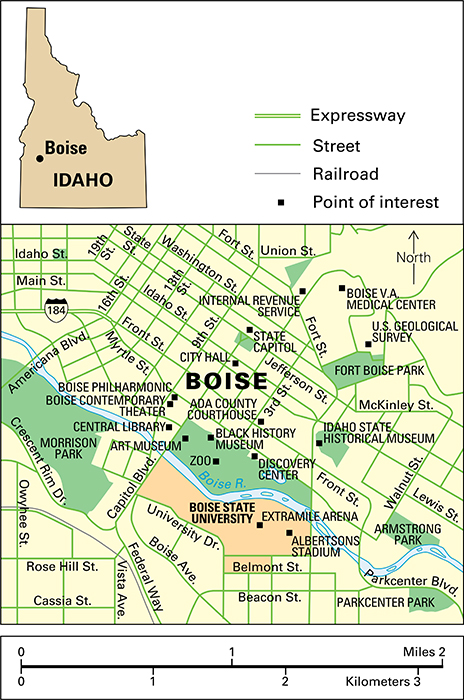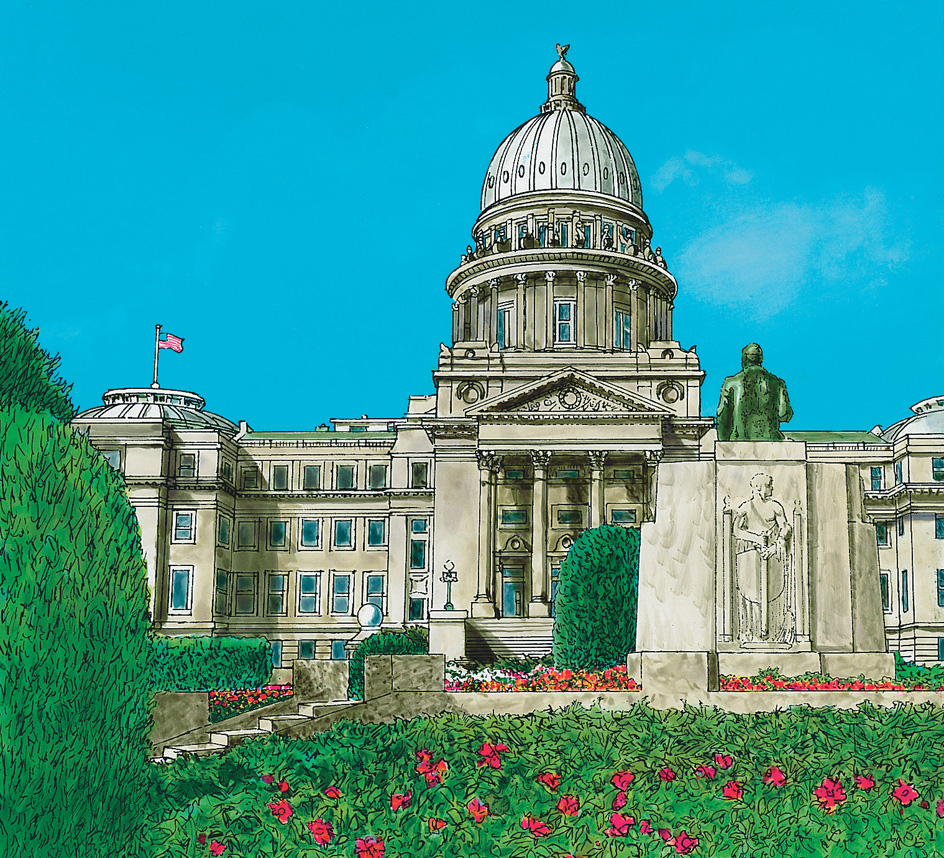Boise, << BOY zee or BOY see >> (pop. 235,684; met. area pop. 764,718), is the capital and largest city of Idaho. It lies in the southwestern part of the state. It straddles the Boise River at the base of the northern Rocky Mountains. Boise comes from the French word bois, which means wooded. French-Canadian fur trappers came to the area in the early 1800’s. They gave the river its name because of the many trees along its banks. Boise is often called the City of Trees.

Boise, the county seat of Ada County, covers 85 square miles (228 square kilometers). The Boise metropolitan area consists of five counties. The city has a mayor-council government. It lies in a fertile valley, and the Boise Mountains rise just to the north.
Dozens of federal agencies maintain regional offices in Boise, and government—federal, state, and local—is the city’s largest employer. Several major corporations have their headquarters in Boise. They include manufacturers of computer chips and companies in the construction, food processing, and forest products industries. The production of electronic equipment is Boise’s largest industry. Factories in the Boise area also produce laminated beams, metal products, farm commodities, and paints.
Cultural attractions include the Boise Art Museum, Zoo Boise, the Idaho State Historical Museum, the Boise Philharmonic, and the Old Boise Historic District. Boise State University is in the city. The Boise River Greenbelt, a system of parks along the river, extends more than 20 miles (32 kilometers) through Ada County. More than 100 miles (160 kilometers) of trails connect the river to the Boise foothills.
Shoshone and Paiute Indians lived in the Boise area before white settlers arrived. Gold was discovered in the nearby mountains in 1862, and miners poured into the area. In 1863, at the crossroads of the Oregon Trail and the gold road to the Boise Mountains, the Army set up Fort Boise and helped lay out the town. Boise became the capital of the Idaho Territory in 1864.

Workers soon came to the Boise area from around the world. Mexican mule packers made Boise a supply point for the gold-rich northern Rockies. Cantonese miners built a Chinese laundry and restaurant district. Irrigation canals and the Oregon Short Line Railroad brought Japanese, Greeks, Irish, and Scandinavians. Germans brought beer brewing and ornate architecture. Hundreds of Basques from northern Spain settled in Idaho during the late 1800’s.
The community’s economy soon shifted to agriculture as farmers started to irrigate land along the Boise River. The city’s population grew from about 6,000 in 1900 to over 17,000 in 1910. By 1960, Boise had about 34,000 people. The population more than doubled when the city annexed suburban areas in the 1960’s. Growth continued from the 1980’s into the 2000’s.
